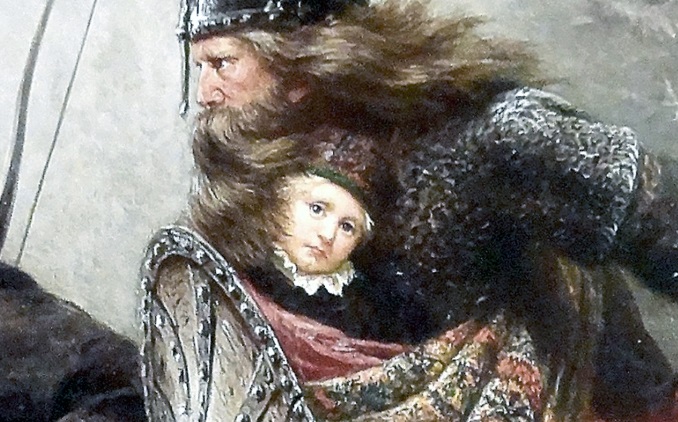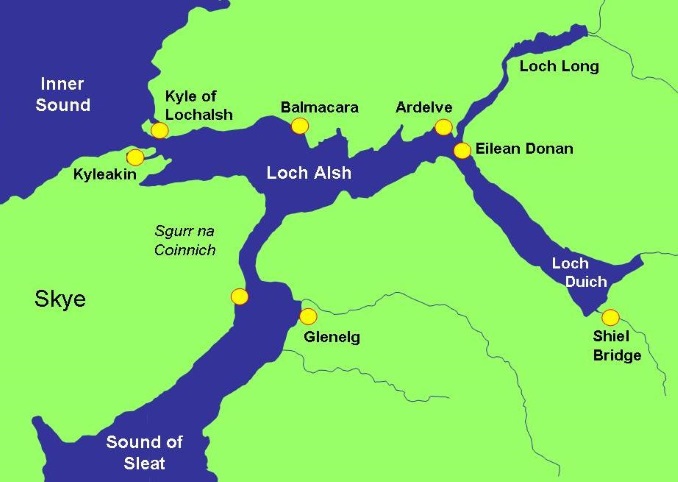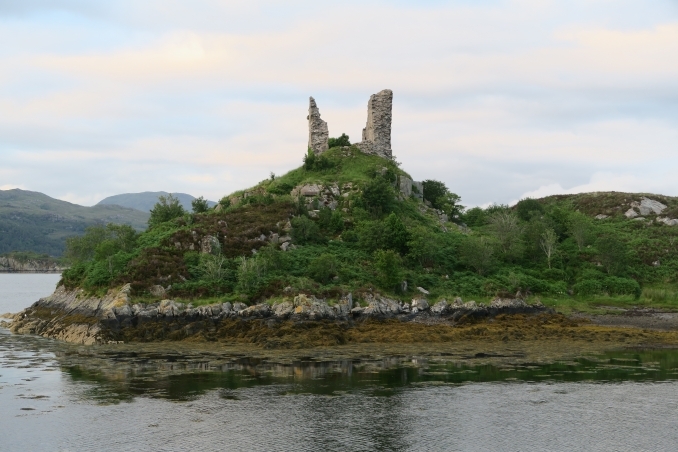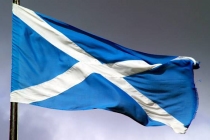The Norwegian Princess who controlled Skye’s strait of Kyle Akin

Loch Alsh is a sea inlet between Skye (Scottish Gaelic: An t-Eilean Sgitheanach) in the Inner Hebrides (Scottish Gaelic: Na h-Eileanan a-staigh) and the Northwest Highlands of Scotland. The strait of Kyle Akin is a narrow stretch of water at the entrance of the loch with the village of Kyleakin (Caol Àcain) on the Skye side and opposite on the northwest Scottish mainland is the town of Kyle of Lochalsh (Caol Loch Aillse). The strait takes its name from Acain, which derives from the name Haakon after King Haakon IV of Norway. It was here that King Haakon IV of Norway, supported by Gaelic forces from the Western Isles, anchored his fleet prior to engaging in battle with the Scottish King Alexander III, at Largs in 1263 AD.
Norse influences were strong in this part of Scotland following the Viking interventions which began in the 8th century AD. The Islands of Scotland and the Isle of Man formed the Northern and Southern Isles. The Northern Isles of Shetland and Orkney were known to the Norse as Norðreyjar. The Southern Isles forming the Kingdom of Mann and the Isles (sometimes known as The Kingdom of the Isles) consisting of the Hebrides, the islands in the Firth of Clyde and the Isle of Man were known as Suðreyjar. In the mid-13th century, King Alexander II followed by his son Alexander III attempted to incorporate the western seaboard of Scotland into the growing Scottish realm. Although the Battle of Largs between Scotland and Norway on 2 October 1263 did not result in a decisive victory for the Scottish, it signalled the end of the power of Norway over the Norse-Gaels (people of Gaelic and Scandinavian origin) who live in the Western Isles.

After the Battle of Largs King Haakon spent the winter at the Bishop's Palace in Kirkwall, Orkney, intending to resume battle and defend his lands against the expanding power of Scotland. However, during his stay in Kirkwall he fell ill and died on 16 December 1263. After his death Scottish incursions increased, eventually leading to the Treaty of Perth on 2nd July 1266, which was agreed in order to end conflict between Norway and Scotland. Under the treaty Scotland was given sovereignty of the Hebrides and Isle of Man upon agreement of payment to Norway. At the same time Scotland recognised Norwegian sovereignty over Shetland and Orkney.
To this day Norse influences remain strong in the Western Islands of Scotland. Family names trace their origin to their Norse-Gael roots. Place names and legends have strong Viking connections. The same is true of Kyleakin (Caol Àcain) the village on the strait of Kyle Akin named after the great King Haakon IV. Close to the village on a promontory overlooking the strait stands the remains of Caisteal Maol which during the late middle ages was known as 'Dunakin'. This castle was built by the MacKinnon's in the late fifteenth century. Carbon dating from part of the existing remains suggesting that the castle that can be seen today was constructed between 1490 and 1513. However, it is said that another fort stood here before the present structure, which was home to a Norwegian Princess who controlled the entrance to the loch.

Legend tells that the castle was built by a Norwegian Princess known as 'Saucy Mary' who was married to a Mackinnon chief. It is said that she derived an income by stretching a large chain across the Kyle. She would exact tolls from all ships passing through the narrows except from those from her own native Norway. Upon her death her remains were interred beneath a cairn in nearby Beinn na Caillaich so that the winds from her native land could pass over her final resting place. The huge ancient cairn of the Norwegian Princess remains on the summit of Beinn na Caillaich which stands at 2,402 ft (732 m). Below are the ruins of Caisteal Maol in a beautiful location and with a commanding position above the Kyle of Lochalsh. A stronghold that was once said to be the Princess’s home and from which she controlled the waters that surrounded it. Even now the remains of the castle are an impressive sight, floodlit at night, standing proud and a reminder of the legend of the Norwegian Princess who guarded the strait of Kyle Akin.
- Scottish
- English
- Log in to post comments





